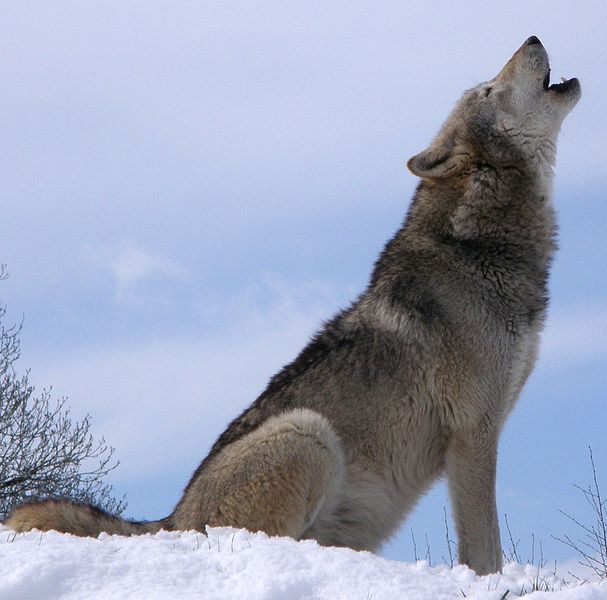 It's my understanding that the perception of the wolf has evolved from two different areas. One (seen in Rome and Japan) viewed the wolf as god-like; in the other (European nations), the wolf is associated with malevolence. Unfortunately, "The Grey" takes the latter view of wolves. At a time when wolves are greatly perceived as being far more dangerous than they are--with occasional attacks in India and the former Soviet nations and only one fatal attack in North America in the past decade--"The Grey" unfairly portrays wolves as malicious man-hunters that can kill by the dozens.
It's my understanding that the perception of the wolf has evolved from two different areas. One (seen in Rome and Japan) viewed the wolf as god-like; in the other (European nations), the wolf is associated with malevolence. Unfortunately, "The Grey" takes the latter view of wolves. At a time when wolves are greatly perceived as being far more dangerous than they are--with occasional attacks in India and the former Soviet nations and only one fatal attack in North America in the past decade--"The Grey" unfairly portrays wolves as malicious man-hunters that can kill by the dozens.Fortunately, that was practically all I disliked about it, for "The Grey" is surprisingly suspenseful, ignoring most cliches while providing lots of suspense and thrills. Take a look at its silly trailer and compare it to its practically Hitchcockian way of presenting the situations. These characters are lost in the Alaskan wild, and the blistering cold is the least of their concerns: there be wolves about them, and they are vicious and numerous. Beyond the wolves, there are several ways to die in the wild, not to mention compromising with other lost, angry, scared survivors. The crash scene reminded me a lot about "Lost" with its famous opening crash scene, and then I thought about how in "Lost," while the characters may have been running from smoke monsters, polar bears, and all sorts of stuff, they were still on a tropical island with apparently loads of conditioner and only needed to really worry about the occasional sand in their shoes. Not so in the frozen north, in which the only food you eat is a wild animal you might be able to kill. According to Liam Neeson, the film's star, it was -40 degrees during the filming in British Columbia and the blizzard was not accomplished with CGI effects.
Neeson is John Ottaway, a man hired by oil companies to protect workers from wolves. His wife has left him, and he is suicidal. The call of the wild (literally) changes his mind; he lives another day, to enter the fray and the fight. Now lost in the wilderness with only several other survivors, he more or less is the leader of the group, though there is the expected amount of competition over what to do. Some of the other survivors are played by Dermot Mulroney, Frank Grillo, and Dallas Roberts.
There are some additional flaws in the film. There is almost one "oh-come-on" moment after another, with several plot holes involved. Someone kept asking me afterward why they didn't simply stay put near the plane wreckage. But how thrilling would that be? The wolves aren't going to chase them in circles for two hours. Thus, a certain amount of suspension of disbelief is required, and it works in ways similar to other man-versus-wild films like "Jaws." You're frightened of the animals, but you can't hardly blame them for ripping people to shreds. But the film's grittiness and scares almost become gratuitous.
Neeson has been able to successfully reinvent himself numerous times, and now he is undoubtedly the toughest guy in the movies. He has several similar intimidating moments here, at one point threatening to beat a fellow survivor to the point where he will be choking on his own blood and another where he goes head to head with an alpha male wolf. As mentioned, Neeson has noted the terrible filming conditions in merciless cold. One day, according to Neeson, Nonso Anozie, who plays one of the survivors, started to recite Shakespeare at the top of his lungs and the experience happened to warm them. This has made me think of "King Lear." Upon relinquishing his kingdom to his ungrateful daughters, Lear went into a terrible storm. Allegorically, the storm represents the chaos Britain is in because his kingdom is divided. He is insignificant in such circumstances; he is mad. Mad indeed, "mad that thrusts in the tameness of a wolf..."
Movies, movies, theater, cinema, watch, watching, watches, view, see, saw, cinema, film, flick, motion picture, Liam Neeson, The Grey, wolves, wolf, LOST, Jaws












